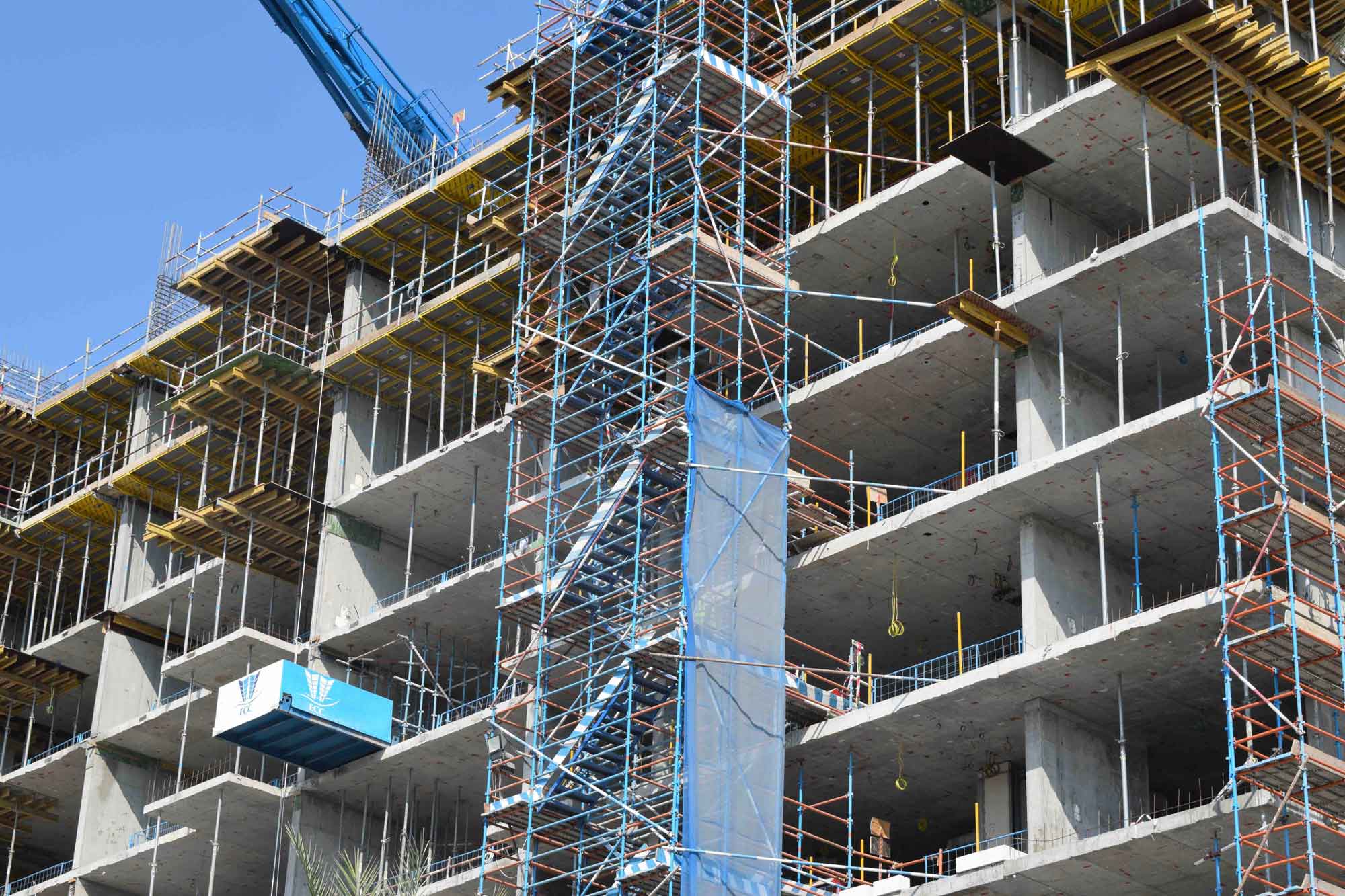Home>diy>Building & Construction>What Is A Change Order Request In Construction


Building & Construction
What Is A Change Order Request In Construction
Modified: January 24, 2024
Learn what a change order request in building construction is and how it impacts projects. Stay informed and manage changes effectively.
(Many of the links in this article redirect to a specific reviewed product. Your purchase of these products through affiliate links helps to generate commission for Storables.com, at no extra cost. Learn more)
Introduction
Welcome to the fascinating world of construction, where building dreams become a reality. In this dynamic industry, no two projects are the same, and unexpected changes are bound to arise. These changes can range from design modifications to unforeseen site conditions, and they often require adjustments to the original construction plans. This is where change order requests come into play.
A change order request is a formal written document submitted by a party involved in a construction project to request a change in the scope of work, contract terms, or budget. It serves as a means to manage and accommodate modifications that occur during the construction process. Change order requests can come from various stakeholders, including owners, contractors, subcontractors, architects, and engineers.
Change order requests play a crucial role in the construction industry, as they ensure that project changes are properly documented, evaluated, and implemented. They help facilitate communication, transparency, and accountability among all parties involved. By understanding the purpose and importance of change order requests, construction professionals can navigate the ever-evolving landscape of construction projects more effectively.
Key Takeaways:
- Change order requests are essential in construction projects, providing a structured process for managing modifications to the scope of work, contract terms, and budget. Thorough documentation, effective communication, and proactive risk management are crucial for successful change order management.
- Managing change order requests requires clear procedures, diligent evaluation, and proactive risk management. Effective communication, collaboration, and cost control measures are vital for navigating modifications and ensuring project success in the dynamic world of construction.
Read more: What Is A Change Order In Construction
Definition of Change Order Request
A change order request, often referred to as a change order or simply a CO, is a formal written document that outlines a proposed modification to the original scope of work, contract terms, or budget of a construction project. It is a way to document and communicate changes that have occurred during the course of a construction project.
Change order requests can be initiated by various parties involved in the project, including the owner, contractor, subcontractors, architects, or engineers. These requests typically arise due to factors such as design changes, unforeseen site conditions, changes in materials or specifications, or adjustments needed to meet building code requirements.
When a change order request is submitted, it must include a clear description of the requested change, along with any supporting documentation, such as revised drawings, specifications, or cost estimates. This ensures that all parties involved have a complete understanding of the proposed modification and can properly evaluate its impact on the project.
Change order requests are distinct from other types of project documentation, such as requests for information (RFIs) or construction change directives (CCDs). While RFIs are used to seek clarification or information during the construction process, CCDs are used when immediate action is required and a formal change order cannot be prepared in a timely manner.
It is important to note that change orders are not automatically approved. They must go through a review and approval process by the project stakeholders, typically including the owner, architect, and contractor. This ensures that the proposed change is in the best interest of the project and does not have any adverse effects on the overall schedule, budget, or quality.
Once a change order request is approved, it becomes an official amendment to the original contract and is incorporated into the project’s documentation. It may result in adjustments to the project schedule, budget, or other contractual terms.
Purpose and Importance of Change Order Requests
Change order requests serve several important purposes in the construction industry. They provide a structured process for managing and documenting changes to the scope of work, contract terms, or budget of a construction project. Understanding the purpose and importance of change order requests is crucial for all parties involved in a construction project.
One of the primary purposes of change order requests is to accommodate changes that occur during the construction process. Construction projects are complex undertakings that involve numerous stakeholders, and it is not uncommon for unforeseen circumstances or design modifications to arise. Change order requests allow for these changes to be properly documented, evaluated, and implemented in a controlled manner.
By documenting changes through change order requests, all parties involved can maintain transparency and accountability. It ensures that changes are approved and agreed upon by the relevant stakeholders, reducing the chances of disputes or conflicts down the line. Change order requests provide a paper trail of the changes made, which can be crucial for legal and financial purposes.
Change order requests also play a vital role in maintaining the overall project integrity. By evaluating proposed changes, project owners, architects, and contractors can assess their impact on various aspects of the project, including the budget, schedule, and quality. This allows for informed decision-making and ensures that changes are beneficial for the project as a whole.
Another important aspect of change order requests is cost control. Construction projects often have strict budgets, and any changes to the scope of work can have financial implications. Change order requests provide a mechanism to assess the cost impact of proposed changes and manage any budget adjustments that are necessary.
Furthermore, change order requests help maintain project schedules. By documenting and evaluating proposed changes, project timelines can be adjusted accordingly to accommodate the modifications. This is crucial to ensure that the project stays on track and meets its completion deadlines.
Overall, change order requests are essential for managing the dynamic nature of construction projects. They provide a formal and structured process for accommodating changes, maintaining transparency and accountability, controlling costs, and ensuring the overall success of the project.
Process of Submitting a Change Order Request
The process of submitting a change order request involves several key steps to ensure that the proposed changes are properly documented and evaluated. By following a structured process, all parties involved can effectively communicate and manage the requested modifications. Here is a breakdown of the typical process of submitting a change order request:
- Identification of Change: The first step is identifying the need for a change. This can be prompted by various factors, such as design modifications, unforeseen site conditions, or changes in materials or specifications.
- Documentation: The party initiating the change order request must prepare a detailed document outlining the proposed modification. This document should include a clear description of the change, as well as any supporting evidence such as revised drawings, specifications, or cost estimates.
- Formal Submission: Once the change order request has been prepared, it needs to be formally submitted to the appropriate parties, such as the owner, architect, or contractor. This can be done through a designated change order form or any other agreed-upon method.
- Review and Evaluation: Upon receiving the change order request, the project stakeholders must review and evaluate the proposed change. This typically involves assessing the impact of the change on various aspects of the project, including the schedule, budget, and quality.
- Approval Process: After the review and evaluation, the change order request goes through an approval process. This may involve obtaining approvals from the owner, architect/engineer, contractor, or any other relevant parties. The approval process ensures that the proposed change aligns with the project goals and does not have any adverse effects.
- Negotiations and Documentation: In some cases, the approval of a change order request may require negotiations between the parties involved. This could involve discussions around cost adjustments, schedule modifications, or any other contractual terms affected by the change. Once negotiations are finalized, the agreed-upon changes are documented in a formal change order document.
- Implementation: Once the change order has been approved and documented, it is incorporated into the project’s progress. This may require adjustments to the project schedule, budget, or other contractual terms dependent on the approved modification.
- Communication: Effective communication is essential throughout the entire process. All parties involved must be kept informed about the status of the change order request, including any decisions, approvals, or changes made.
By following this well-defined process, change order requests can be managed efficiently, allowing for clear documentation, evaluation, and implementation of requested modifications. It ensures that all parties involved are on the same page and minimizes the potential for misunderstandings or disputes.
Information Required in a Change Order Request
A change order request is a formal document that outlines proposed modifications to a construction project. To ensure clear communication and evaluation of the requested changes, certain information must be included in a change order request. Here are the key pieces of information that should be included:
- Project Details: Provide the project name, address, and any relevant project numbers or codes. This helps in identifying the specific project to which the change order request relates.
- Date and Contact Information: Include the date of the change order request and the contact information of the party submitting the request. This ensures proper record-keeping and facilitates communication regarding the proposed change.
- Description of Change: Clearly describe the requested change, including the specific scope of work affected by the modification. Provide detailed information about what needs to be changed, added, or removed from the original scope of work.
- Reason for the Change: Explain the reason behind the requested change. This could be due to design modifications, unexpected site conditions, changes in materials or specifications, or any other factor that necessitates a modification to the original plan.
- Schedule Impact: Assess the impact of the change on the project schedule. Specify if the change will require additional time or if it will affect the overall project timeline. This information helps in evaluating the feasibility of the requested change and planning accordingly.
- Cost Impact: Evaluate the financial impact of the proposed change. Provide a detailed breakdown of the estimated or actual cost associated with the change, including labor, materials, equipment, and any other relevant expenses. This allows for proper budget evaluation and adjustment if necessary.
- Supporting Documentation: Include any supporting documentation that helps explain or justify the requested change. This may include revised drawings, technical specifications, photographs, or any other relevant information that supports the need for the change.
- Contractual Considerations: Identify any contractual implications of the proposed change. This may include assessing potential contract amendments, changes to the payment schedule, or adjustments to warranty periods. Consider consulting with legal professionals or contract administrators to ensure that all contractual obligations are met.
- Signature and Approval Section: Provide a section for all parties involved to sign and approve the change order request. This ensures that all stakeholders have reviewed and agreed to the proposed change, helping to avoid any future disputes or misunderstandings.
By including these key pieces of information in a change order request, project stakeholders can have a comprehensive understanding of the proposed modification. This facilitates effective evaluation and decision-making regarding the requested change, ensuring that it aligns with the project’s goals and can be properly implemented.
Read more: How Do Change Orders Work In Construction
Evaluating Change Order Requests
When a change order request is submitted, it is important to evaluate the proposed changes thoroughly. This evaluation process ensures that all aspects of the project are considered and that the requested modifications are in the best interest of the project. Here are some key factors to consider when evaluating change order requests:
- Scope and Impact: Assess the scope and impact of the proposed change. Determine how the requested modification will affect the overall project, including the schedule, budget, and quality of work. Consider whether the change is necessary and if it aligns with the project’s objectives.
- Feasibility and Technical Considerations: Evaluate the technical feasibility of the change. Consider the project’s design, construction methods, and existing infrastructure to determine if the requested modification can be implemented successfully. Assess whether the change complies with building codes, regulations, and industry standards.
- Cost and Financial Impact: Analyze the financial implications of the change. Evaluate the estimated or actual cost associated with the proposed modification, including any potential cost savings or cost overruns. Consider the impact on the project’s budget and determine if it is feasible to accommodate the requested change financially.
- Schedule Impact: Consider the impact of the change on the project’s schedule. Assess if the proposed modification will cause delays or disruptions to the overall project timeline. Evaluate whether the change can be incorporated within the existing schedule or if adjustments need to be made. Keep in mind any contractual obligations related to project completion dates.
- Contractual Obligations: Review the project’s contract to determine if the requested change is within the contractual framework. Assess if any amendments or variations to the contract are required to accommodate the proposed modification. Ensure that all necessary parties, such as the owner, contractor, and any subcontractors, are involved in the evaluation process.
- Risk Assessment: Consider any potential risks associated with the requested change. Evaluate the impact on safety, quality, and performance. Identify any potential conflicts or contractual risks that may arise from the modification. Assess the risk mitigation strategies and determine if the proposed change aligns with acceptable levels of risk for the project.
- Consultation and Collaboration: Seek input from relevant parties, such as the design team, project manager, contractors, and subcontractors. Consult with subject matter experts to evaluate the technical feasibility and potential impacts of the change. Encourage open communication and collaboration to ensure a thorough evaluation process.
- Decision-Making and Approval: Based on the evaluation, make an informed decision about the change order request. Determine if the requested change should be approved, denied, or modified. Obtain the necessary approvals from the project stakeholders, ensuring that all parties involved are aligned and in agreement with the decision.
By following a comprehensive evaluation process, change order requests can be thoroughly analyzed, ensuring that proposed modifications are feasible, beneficial, and align with the project’s objectives. Effective evaluation allows for informed decision-making and minimizes the potential for negative impacts on the schedule, budget, and quality of the construction project.
A change order request in construction is a formal document that outlines proposed changes to the original scope of work, including cost and schedule impacts. It’s important to carefully review and negotiate change orders to avoid disputes and delays.
Approval and Implementation of Change Order Requests
Once a change order request has been evaluated and approved, it is crucial to ensure proper implementation to effectively incorporate the requested changes into the construction project. The approval and implementation process involves several key steps to ensure that the modifications are carried out successfully:
- Documentation: Once a change order request is approved, it should be documented in a formal change order document. This document should include a detailed description of the approved changes, the associated costs, any adjustments to the schedule, and any other relevant contractual considerations. All parties involved should review and sign the change order document to indicate their agreement.
- Notification: Notify all project stakeholders, including the owner, contractors, subcontractors, architects, and engineers, about the approved change order and its details. This ensures that everyone is aware of the modifications and can plan their activities accordingly.
- Implementation Plan: Develop an implementation plan for the approved changes. This plan should outline the specific tasks, responsibilities, and timelines related to integrating the modifications into the project. Assign responsibilities to the appropriate parties to ensure that the changes are executed effectively.
- Construction Documentation: Update the project’s documentation, including drawings, specifications, and any other relevant documents, to reflect the approved changes. Ensure that all project team members have access to the revised documentation to avoid any confusion or errors during the construction phase.
- Communication and Coordination: Maintain open lines of communication and coordinate with all parties involved in the implementation of the change order. Regularly communicate updates and progress to ensure that everyone is informed about the status of the modifications. Address any concerns or issues that may arise during the implementation process.
- Cost Control: Monitor the costs associated with the approved change order to ensure that they align with the estimated or approved budget. Keep track of any additional expenses or savings resulting from the modifications. Implement proper cost control measures to prevent any budget overruns as a result of the change.
- Quality Control: Implement quality control measures to ensure that the modifications meet the required standards and specifications. Conduct inspections, tests, or any other quality assurance procedures to verify that the changes have been executed correctly and meet the project’s quality criteria.
- Documentation and Closeout: Document all aspects of the change order implementation process, including any actions taken, decisions made, and any additional documentation created. Maintain proper records of the change order to ensure a complete project closeout and facilitate any future audits or disputes.
By following these steps for the approval and implementation of change order requests, construction projects can effectively integrate the requested modifications. Proper documentation, communication, coordination, and quality control measures ensure that the changes are successfully incorporated into the project while minimizing any disruptions or negative impacts on the project’s schedule, budget, and overall quality.
Effect of Change Order Requests on Construction Projects
Change order requests have a significant impact on construction projects, influencing various aspects of the project’s timeline, budget, and overall success. Understanding the effects of change order requests is essential for all stakeholders involved in construction projects. Here are some important effects to consider:
- Schedule Impact: Change order requests often result in adjustments to the project schedule. Depending on the nature and complexity of the requested changes, additional time may be needed for design modifications, material procurement, coordination with subcontractors, or other related activities. Consequently, these schedule changes can impact project milestones and overall completion dates.
- Budget Implications: Change order requests can have a financial impact on construction projects. Proposed modifications may require additional labor, materials, equipment, or specialized resources, all of which can increase project costs. Conversely, in some cases, change order requests may result in cost savings if they identify more efficient or cost-effective alternatives to the original plan.
- Contractual Considerations: Change order requests often trigger contract changes. The approval and implementation of a change order may require amendments to the original contract terms and conditions. These contractual changes can involve adjustments to pricing, payment terms, scope of work, warranties, or any other relevant contractual provisions.
- Risk Management: Change order requests introduce new risks to construction projects. Depending on the type and scope of the requested changes, potential risks may include construction delays, cost overruns, quality control issues, or disputes over contract variations. Proper risk management measures need to be implemented to mitigate these risks and ensure successful project outcomes.
- Documentation and Record-Keeping: Change order requests generate additional project documentation. As modifications are approved and implemented, it is essential to maintain accurate and detailed records of the change orders, including the reasons for the changes, associated costs, and any updates to project plans or specifications. Thorough documentation helps in future reference, fulfilling contractual obligations, and resolving any disputes that may arise.
- Communication and Collaboration: Effective communication and collaboration become crucial when managing change order requests. All project stakeholders need to be informed about the requested changes, their impact, and how the modifications will be implemented. Clear and timely communication among owners, contractors, subcontractors, architects, and engineers is vital to ensure that everyone is on the same page and aligned with the project’s objectives.
- Overall Project Success: The effect of change order requests on construction projects ultimately contributes to the overall project success. Proper management of change orders ensures that project modifications are carefully evaluated, communicated, and implemented. This helps maintain project integrity, improve collaboration, control costs, and deliver a successful construction project that meets stakeholders’ needs and expectations.
Understanding and managing the various effects of change order requests are vital for successful construction project management. By carefully evaluating and addressing the impact of change orders on the project schedule, budget, contracts, risks, and overall project success, stakeholders can navigate the evolving nature of construction projects while achieving desired outcomes.
Challenges and Risks Associated with Change Order Requests
Change order requests present unique challenges and risks that need to be carefully managed in construction projects. These challenges can have significant implications for project schedule, budget, and overall project success. It is important for all stakeholders to be aware of and proactively address these challenges. Here are some common challenges and risks associated with change order requests:
- Uncertainty and Scope Creep: Change order requests often arise from unforeseen circumstances or design modifications, leading to uncertain project parameters. As the project progresses, there is a risk that additional changes may be requested, potentially leading to scope creep. Managing these uncertainties and ensuring clear documentation of requested changes is essential to prevent project scope from expanding uncontrollably.
- Budget Overruns: Change order requests can result in additional costs that may not have been accounted for in the original project budget. If not properly managed, these unexpected expenses can lead to budget overruns, impacting the overall financial viability of the project. Effective cost control measures and diligent evaluation of the financial impact of change orders can help mitigate this risk.
- Construction Delays: Changes to the project scope or design can cause delays, especially if they require adjustments to work already completed or coordination with subcontractors. If change order requests are not managed efficiently, they can disrupt the construction schedule and result in project delays. Timely evaluation, approval, and implementation of change orders, along with effective communication and coordination among project stakeholders, are key to minimizing construction delays.
- Disputes and Claims: Change order requests can lead to disputes between project stakeholders, particularly if there are disagreements regarding the necessity or validity of the proposed changes, their impact on the project, or associated costs. Poor communication, misunderstandings, or lack of proper documentation can escalate disputes and result in legal claims or delays in project completion. It is essential to maintain clear communication, documentation, and collaboration between all parties to mitigate the risk of disputes.
- Project Coordination and Integration: Implementing change order requests requires effective coordination and integration with the ongoing project activities. Changes may impact multiple aspects of the project, such as design, procurement, construction, and quality control. Ensuring seamless integration of changes into the project requires proper planning, consideration of interdependencies, and collaboration among various project teams and stakeholders.
- Quality Control Challenges: Change order requests may introduce design or functionality changes that can impact the quality of work. It is essential to have proper quality control measures in place to ensure that the changes are implemented correctly and meet the required standards. Failure to maintain appropriate quality control can result in rework, project delays, or compromised project outcomes.
- Administrative Burden: Managing change order requests can add administrative complexity to a construction project. Properly documenting and processing change orders, obtaining necessary approvals, and tracking their impact on the project schedule and budget require meticulous attention to detail and efficient administrative processes.
Effectively managing the challenges and risks associated with change order requests requires proactive planning, clear communication, diligent evaluation, and proper documentation. By anticipating and addressing these challenges, stakeholders can minimize the negative impacts of change orders and ensure successful project outcomes.
Read more: What Is A Work Order In Construction
Strategies for Managing Change Order Requests
Managing change order requests effectively is crucial in construction projects to ensure that modifications are properly evaluated, communicated, and implemented while minimizing negative impacts on the schedule, budget, and overall project success. Here are some strategies for managing change order requests:
- Establish Clear Change Order Procedures: Develop and communicate clear and standardized procedures for submitting, evaluating, and approving change order requests. This ensures that all stakeholders understand the process and follow consistent protocols when initiating and reviewing change orders.
- Thorough Documentation: Maintain detailed documentation throughout the project, including contract agreements, project plans, and specifications. This documentation serves as a reference point when evaluating change order requests, ensuring that any modifications align with the project’s original intent.
- Early Identification and Communication: Encourage the early identification and communication of potential changes. Project team members should be vigilant in identifying circumstances or situations that might necessitate modifications. Timely communication of potential changes allows for proactive planning and evaluation.
- Diligent Evaluation and Analysis: Evaluate change order requests diligently to assess their impact on project scope, schedule, and budget. Consider the feasibility, cost implications, and contractual obligations associated with the proposed changes. Perform a thorough analysis to determine the best course of action for each change request.
- Effective Communication: Maintain open lines of communication among project stakeholders. Ensure that all parties involved are informed about change order requests and their status. Effective communication fosters collaboration, reduces misunderstandings, and allows for smooth decision-making and implementation of approved changes.
- Collaborative Approach: Encourage collaboration among project team members when evaluating change order requests. Involve relevant parties, such as owners, architects, engineers, and contractors, in discussions surrounding potential modifications. This collaborative approach helps ensure that all perspectives are considered, leading to informed decisions.
- Proactive Risk Management: Implement risk management strategies to identify, assess, and mitigate risks associated with change order requests. Regularly review potential risks, and develop contingency plans to address any adverse impacts that may arise from changes. Proactive risk management minimizes the likelihood of disputes or delays resulting from change orders.
- Cost Control Measures: Implement effective cost control measures to manage the financial impact of approved change orders. Monitor expenses and adjust the project budget as necessary. Regularly communicate budget updates to all stakeholders to ensure transparency and facilitate informed decision-making.
- Documentation and Approval Process: Ensure comprehensive documentation of change order requests, including the reasons for the changes, project impact, and any associated costs. Implement a clear and efficient approval process to obtain the necessary approvals from project stakeholders, ensuring accountability and adherence to project requirements.
- Regular Review and Monitoring: Continuously review and monitor the progress and impact of approved change orders. Assess the actual implementation of the changes and measure their impact on the project. Regular monitoring helps identify any deviations, evaluate their consequences, and take corrective actions, if necessary.
By implementing these strategies for managing change order requests, construction projects can navigate modifications with greater efficiency, transparency, and success. Effective management of change orders ensures that project changes are carefully evaluated, documented, and implemented while minimizing potential risks and disruptions.
Conclusion
Change order requests play a significant role in the dynamic world of construction, allowing for the necessary adjustments and modifications that often arise during a project. They serve as formal documents that facilitate the communication and management of changes to the scope of work, contract terms, and budget.
Throughout this article, we explored the definition and purpose of change order requests, discussed the importance of properly evaluating and approving them, and highlighted the effects they have on construction projects. We also delved into the challenges and risks associated with change order requests and provided strategies for their effective management.
Understanding the intricacies of change order requests is crucial for all stakeholders involved in construction projects. It allows for proactive planning, clear communication, and informed decision-making, thereby minimizing disruptions, delays, and unnecessary costs.
By following a structured process for submitting, evaluating, and implementing change order requests, project teams can navigate modifications seamlessly. Thorough documentation, effective communication, diligent evaluation, and proactive risk management are key to successfully managing change orders and ensuring project success.
Change is inevitable in construction projects, but with the right approach, change order requests can be effectively managed to maintain project integrity, accountability, and timely completion. By embracing change as an opportunity for improvement and employing the strategies discussed in this article, construction professionals can navigate the challenges, mitigate risks, and deliver successful construction projects for their clients.
Frequently Asked Questions about What Is A Change Order Request In Construction
Was this page helpful?
At Storables.com, we guarantee accurate and reliable information. Our content, validated by Expert Board Contributors, is crafted following stringent Editorial Policies. We're committed to providing you with well-researched, expert-backed insights for all your informational needs.














0 thoughts on “What Is A Change Order Request In Construction”